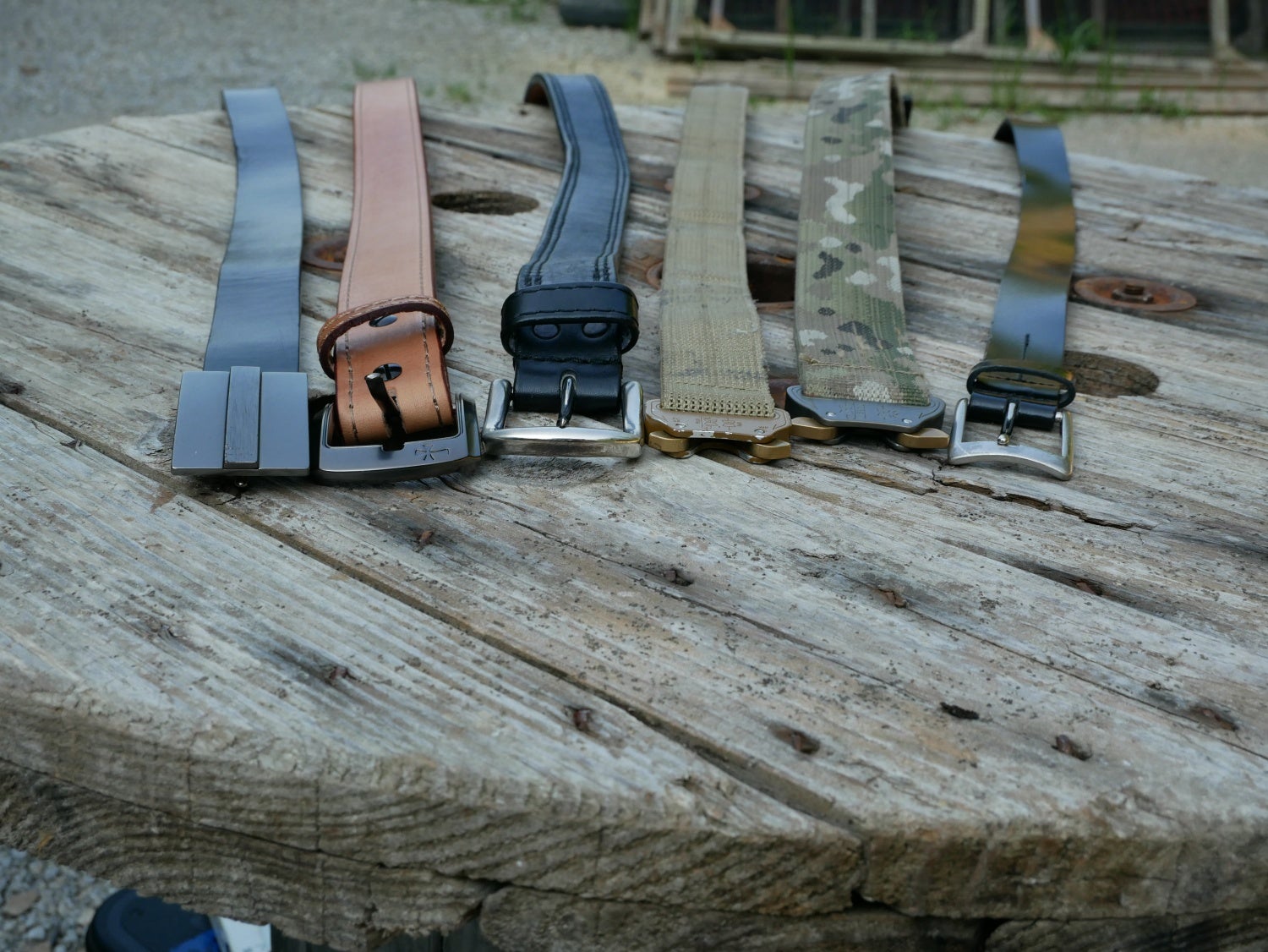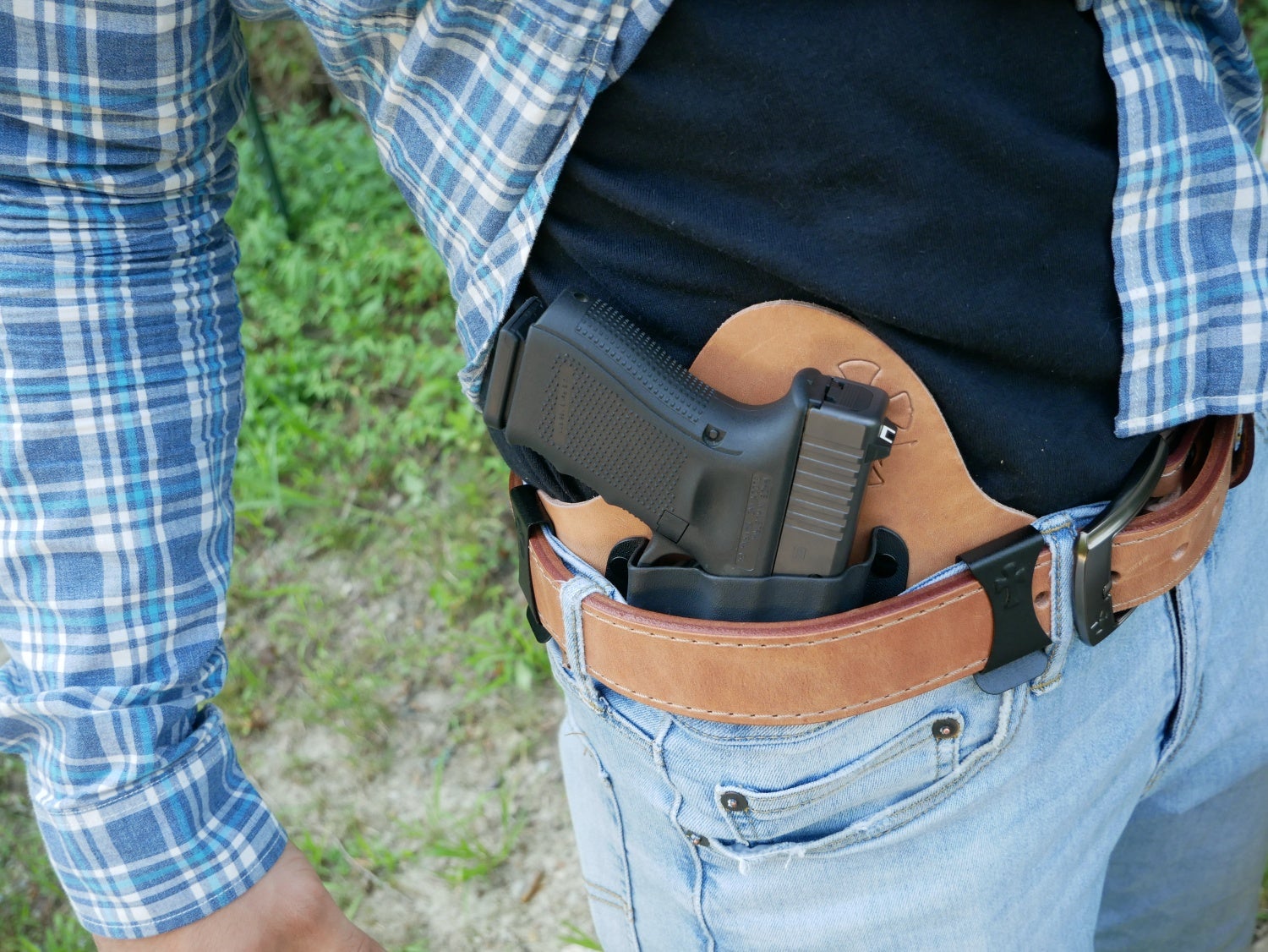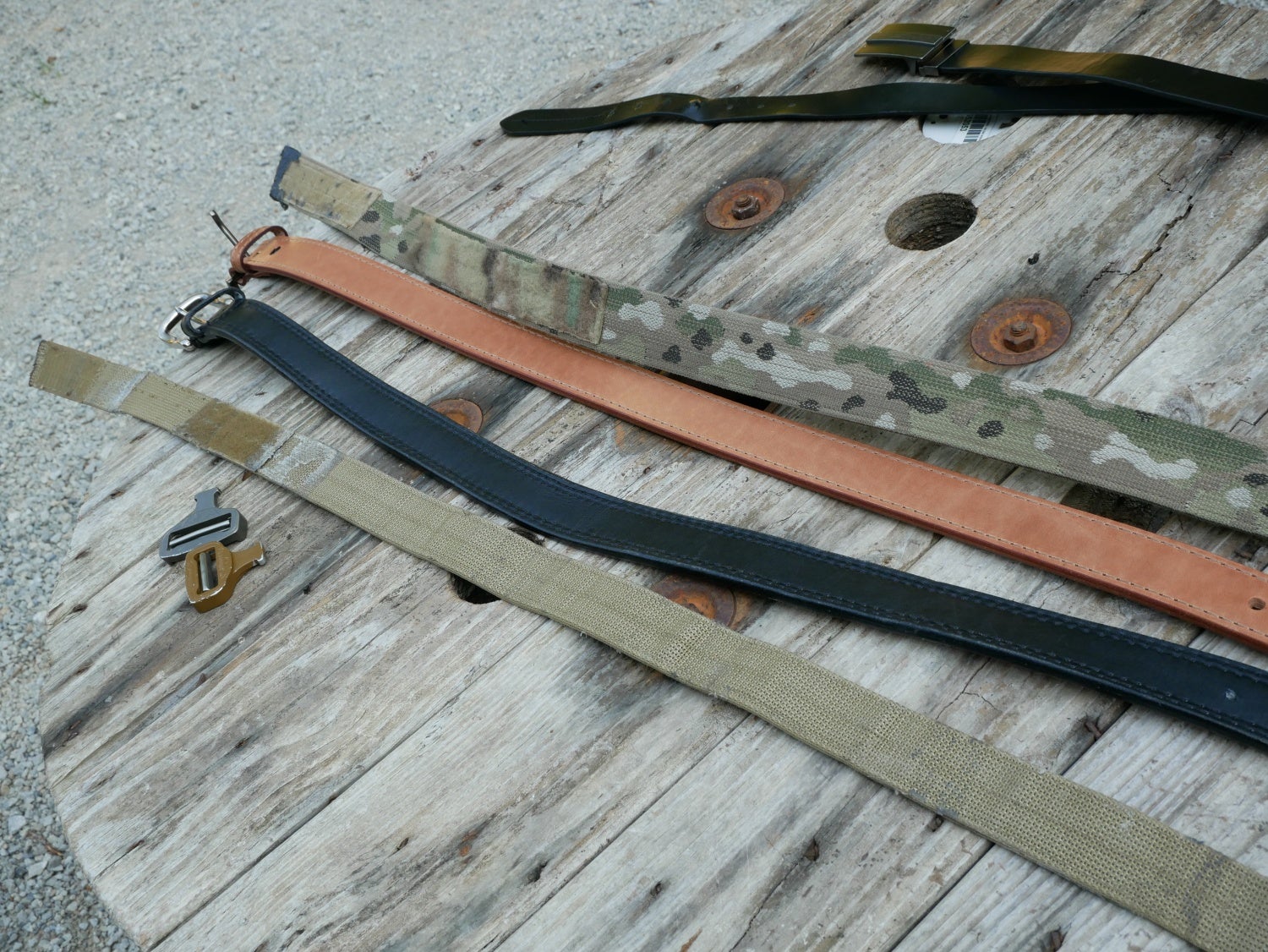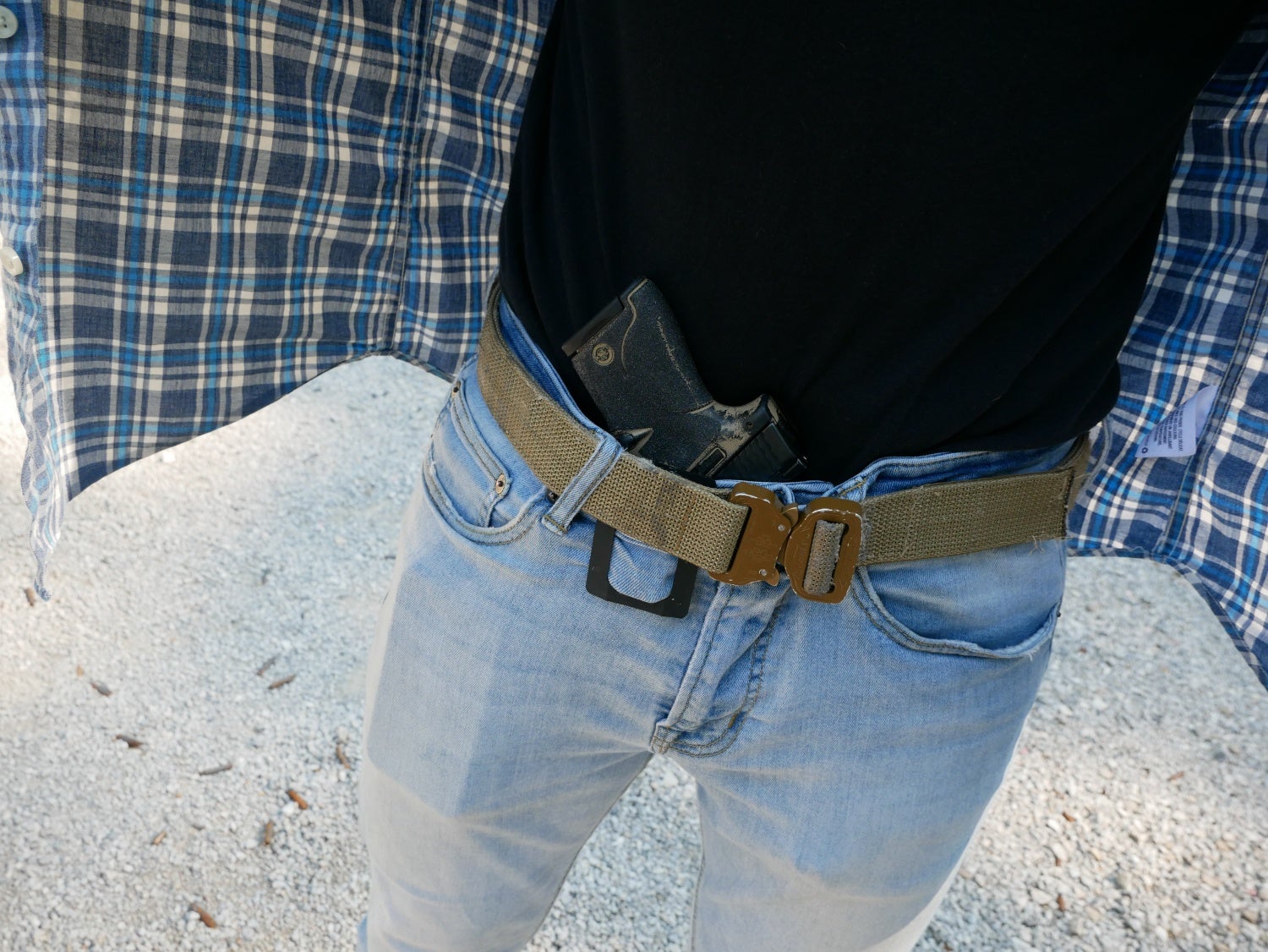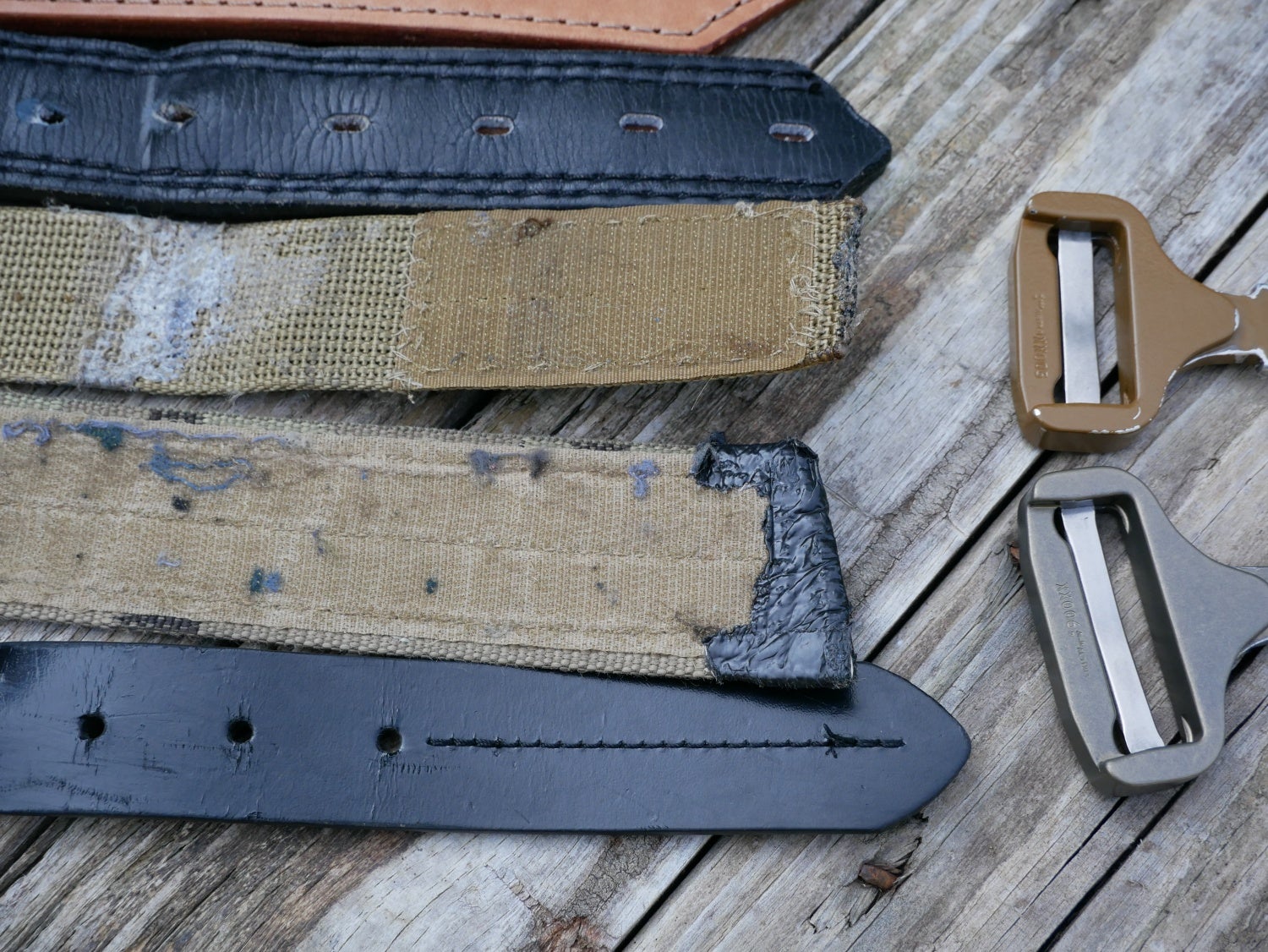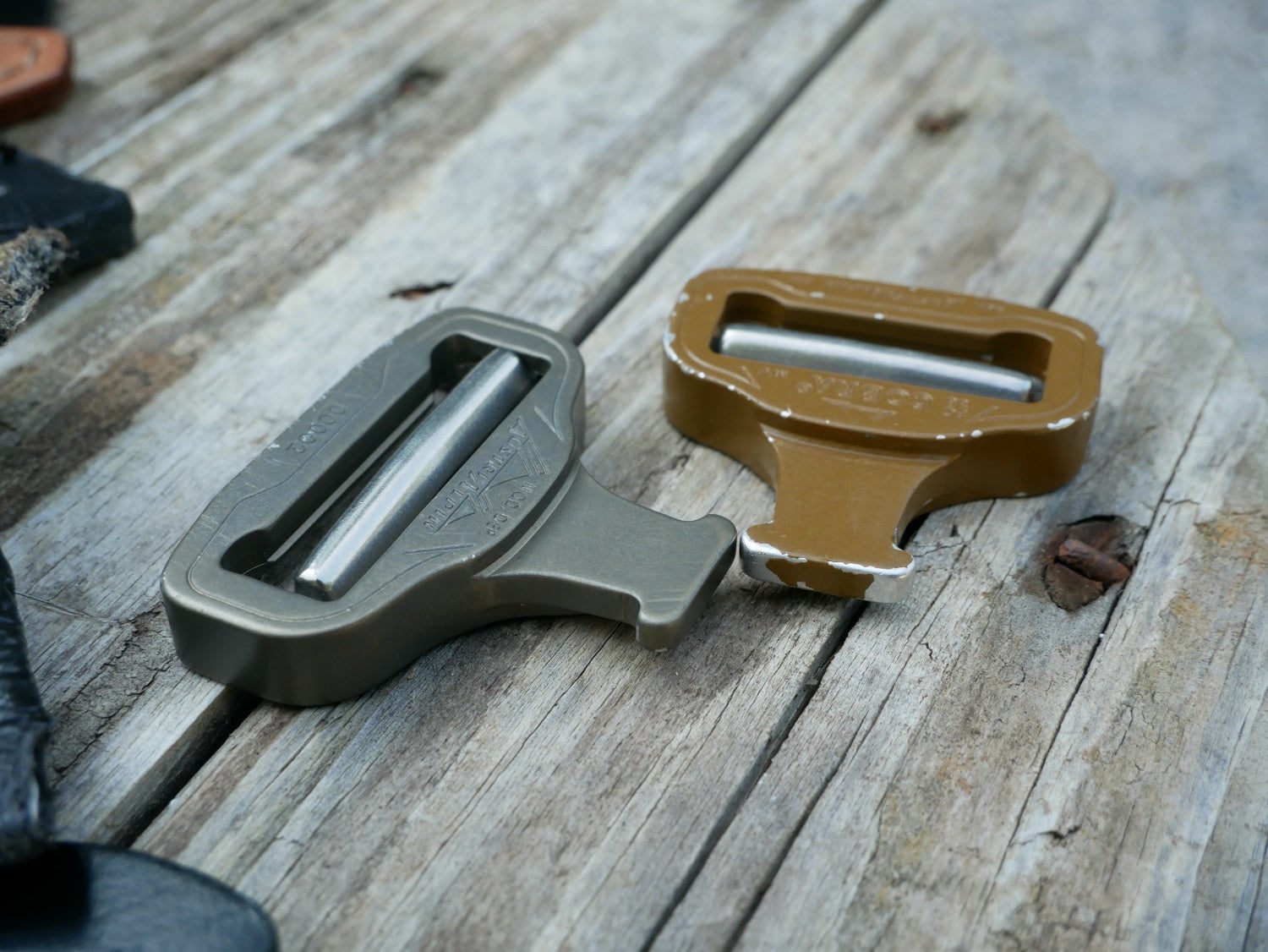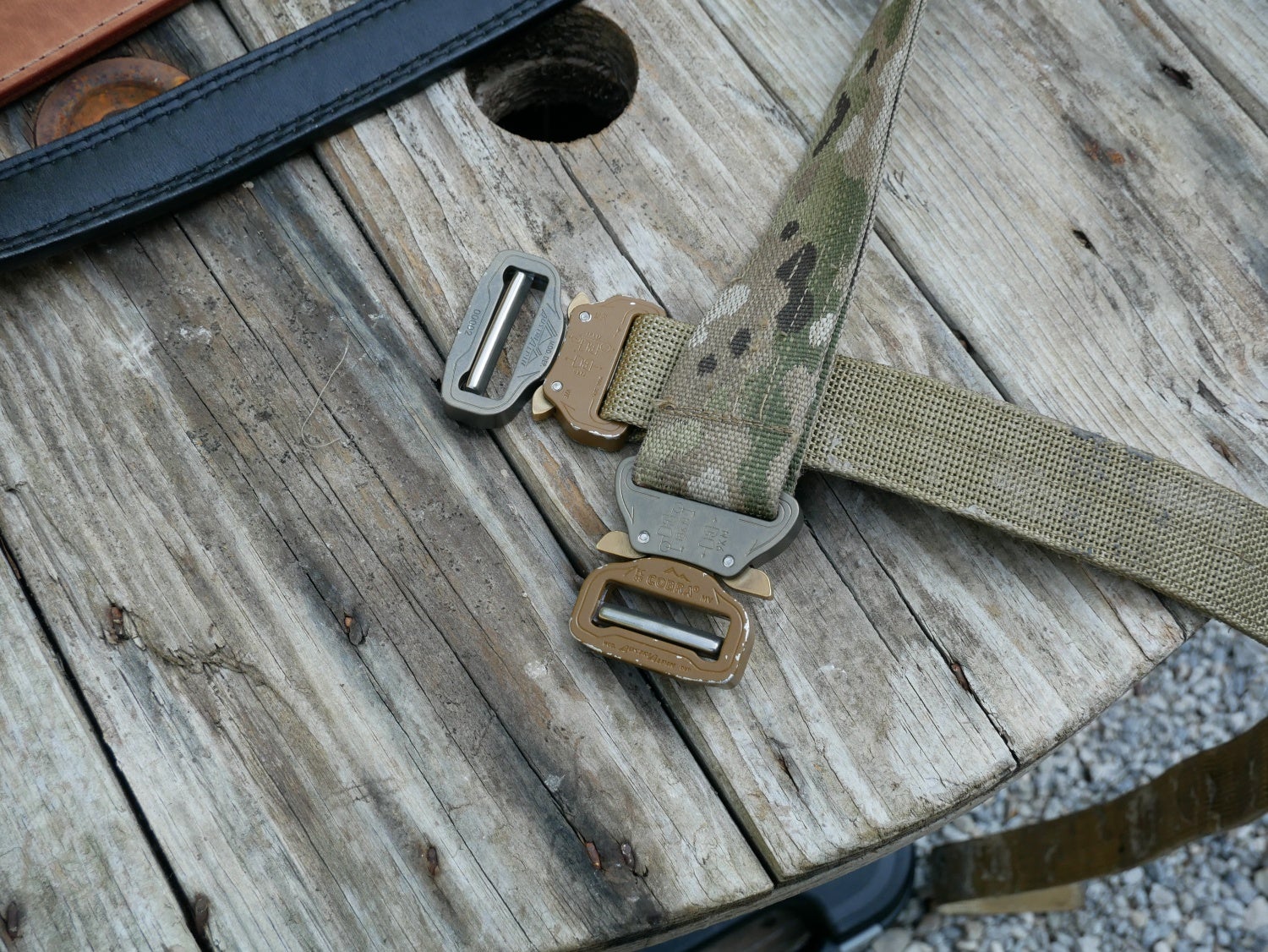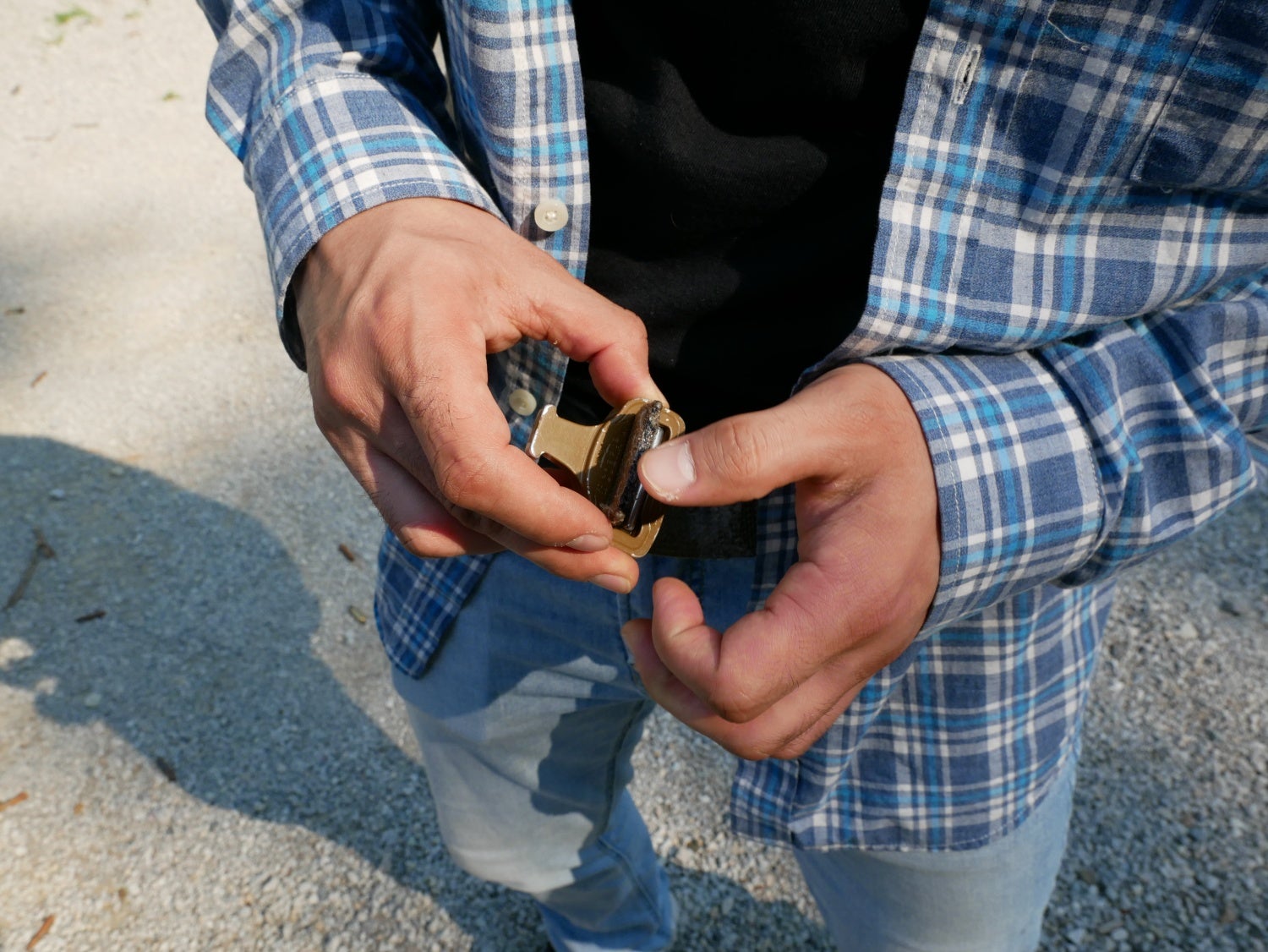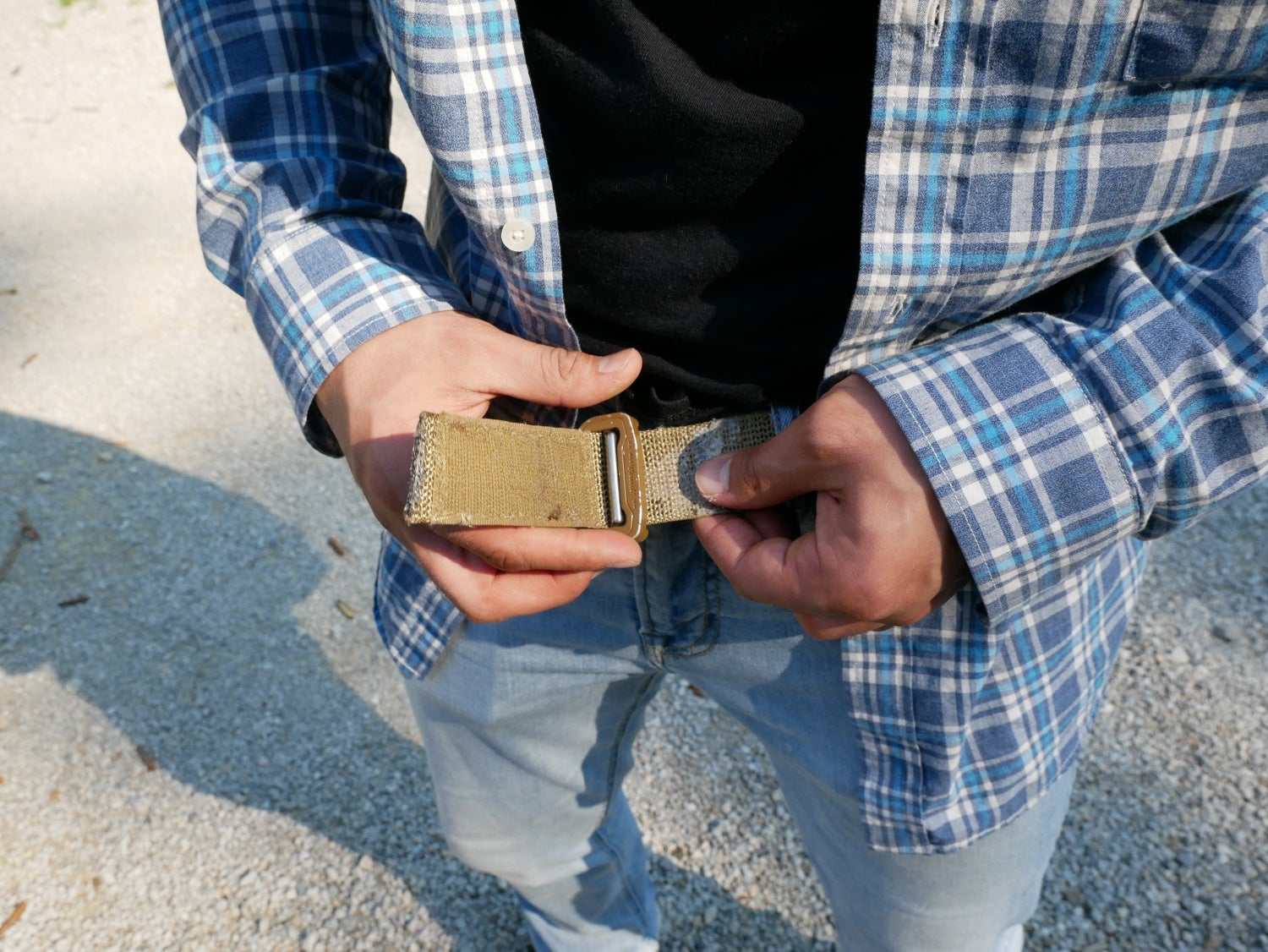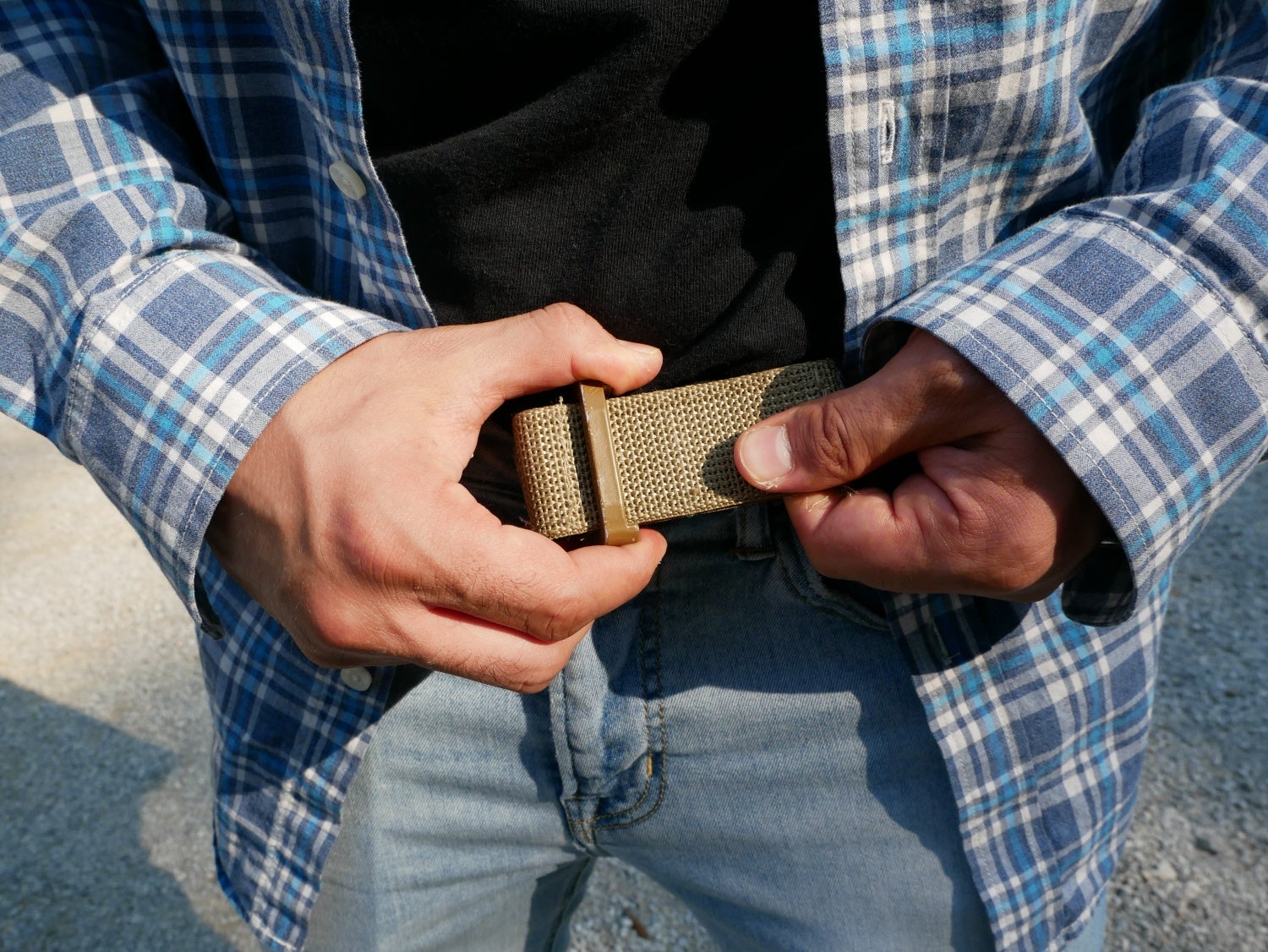The Cobra buckle has been making waves within numerous communities in our industry for several years now. Some of the reasons behind this is the new application as a gun belt. Some of the hype around the design has to do with the buckle itself, being made by a company called AustriAlpin in Austria. The company originally made these buckles to be used in mountaineering equipment and aircraft rigging where sometimes thousands of pounds of material is being sustained by these buckles before their failure points. Some models have a limit of 2,000 pounds, others 4,000 pounds, and still yet some have 11,000 pounds of pressure that need to be applied before the buckle breaks. Essentially as my friend put it to me once, “The belt will fail before the buckle will”.
This review began as a critique of the Assaulter’s Gun Belt from First Spear, LLC but because I’m constantly switching out these new nylon belts with traditional leather ones, and because I have another nylon belt with a Cobra buckle installed on it from an unknown company, I think it would be a great opportunity to just talk about these belts as a concealed carry/ Every Day Carry (EDC)/ gun belt set up in general because although the belts offer a number of advantages, they also have a number of disadvantages that potential customers should be aware of before they purchase one of them.
To begin with, let us talk about traditional leather before moving to why we would want to switch to the nylon ones. There is absolutely nothing wrong with an EDC leather belt. If the majority of concealed carry you do is in a formal, civilian work space setting where deep concealment and not getting “outed” is a high priority, then a leather belt might just be your best bet. Leather belts from any company to include any specifically concealed carry company such as Crossbreed, Galco, or Alien Gear are particularly useful because they are designed and created with the CCW customer’s needs in mind, unlike Brand Name X that just makes good belts. They don’t scream “GUN” or “TACTICAL” at the top of their leather lungs when observed by others. They are perfectly at home with a dress suit attire, or even a blue collar job position, or jeans for that matter. If they are made from real leather, then they even bend and eventually contour to the form of your waist, so they curve in with your belt line much better than other systems. Although this does take many weeks or months of daily use for this warping to occur.
But they have many downsides. The usually large buckles and the leather tabs that stick out after them are usually so huge that when coupled with an appendix carry IWB holster position, it just helps the inevitable bulge that occurs at the front of the waist line. Having the holes in the belt can work well for keeping the buckle secure, but if a user gains weight or loses weight, and goes outside the parameters of these holes, cutting a new hole in the leather belt now just looks silly and unprofessional in many circumstances. Because they are made of leather, if they become wet due to the environment someone finds themselves in, they can become difficult to work with because they might warp, swell or shrink. They also aren’t as accessible in getting off a person in an emergency situation where the belt needs to come off Ricky-Tick, as compared to the Cobra buckle. Leather belts aren’t as adaptable as some of these tactical belts when it comes to velcro attachments, or can be as sturdy in a thinner material.
On the other hand, these nylon belts offer numerous advantages and disadvantages. The largest advantage for concealed carry is the Cobra buckle system. It won’t and probably won’t ever fail due to the excellent properties of the overkill design when it comes to everyday concealed carry. While at the same time being almost unfailing, it can much more rapidly and easily be undone in an emergency. For appendix carry users it goes away with that bulge in the front and you can adjust the belt so that there is a very minimal bulge and only have it coming from the holster and firearm. These belts are also usually infinitely more adjustable than any leather belt without poking additional holes in the actual material. Some of these belts have plastic layers on the inside of the nylon material, allowing it to be much more sturdy than any leather belt in an equivalent width. The importance of width is necessary to mention here because usually someone who conceal carries, wants their belt as thin as possible because if it is thick, the waistline is going to protrude even more once anything IWB is put inside of it.
Now for the downsides. The nylon Cobra buckle belts are in my opinion cursed with three glaring disadvantages. The first disadvantage is the choice of particular buckle width itself. Although it may be perfect for jumping out of planes and climbing mountains, the overwhelming majority of these belts out there are outfitted with the 2 inch or 1.75-inch Cobra buckle. Which requires that the buckle is taken completely off before putting the belt on. This is bad for a number of reasons. First of all, the point where that belt is set at has now been lost and a user will have to “retune” the belt to a particular length. Then, by taking the belt buckle on and off again, the velcro and the leading edge of the belt becomes tremendously frayed, almost to the point of not being able to use it. The velcro simply turns to fuzz and can become difficult to hold any sort of leading edge. Then the leading edge itself, after having being inserted and reinserted into the buckle so many times, becomes almost impossible to fit in. Burning it helps keep the edges straight, but why do I have to burn my $60,$70, $80 belt only a couple months after buying it, just to get it to keep working? I eventually used duck tape to the leading edge, in order to keep it from fraying more.
This fraying and velcro problem is almost non-existent if you are using the belt as a sort of outside duty belt system and only really mess with the belt’s length every couple of months if that. But if you are changing pants at least twice a week, then you’ll be constantly undoing that belt and losing its efficiency every time. Another issue is that I’ve found with the First Spear belt that if it is kept in the exact same position enough times on the belt, the metal starts rubbing through the nylon, creating a hole in the belt where there shouldn’t be one.
Fortunately, there is a solution to this debacle and that is a shorter Cobra buckle that can be fed through your belt loops, the 1-inch version. Unfortunately, these smaller buckles aren’t as readily available as the bigger ones, and thus not many people know they exist. Even if you buy a 1.75 inch or 2-inch buckle and then decide to go with the shorter buckle, it won’t fit the belt at all because the dimensions of the belt won’t allow it. There are a number of companies that have this system where essentially the one-inch buckle is attached to a one-inch section of nylon that is adjustable and is connected to a sturdy nylon surrounded plastic portion that acts as the inner portion of the belt. But if your original Cobra buckled belt didn’t scream “TACTI-COOL”, then this certainly will. One of my friends wears it, and every time I see him, his belt just looks like a ridiculous system of overlapping cloth pieces. If you are interested in the different versions of these buckles, Mil-Spec Monkey has an excellent selection on their website.
The other point about these belts is that they don’t “form” to your waistline at all. Because they are made out of nylon and plastic, how can they? This isn’t a huge disadvantage, but it can at times be annoying when the belt is constantly stuck up in places where it usually wouldn’t be with a leather belt that has formed to a waistline. One final note I would like to add is about the finish. In my experience, the Coyote tan finish appears to chip off, at least on the example that I have in my collection, whereas the silver/gold that the belt comes from the factory in doesn’t chip at all because this is the original material.
I hope this discussion of various belt systems has helped readers give some thought as to what sort of belts they would be inclined to use while carrying concealed or to give thought to something else that they haven’t thought of before.
Additional TFB articles on gun belts:
 Your Privacy Choices
Your Privacy Choices

